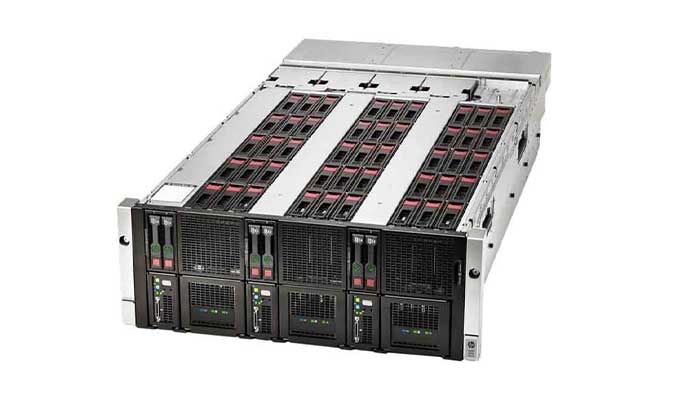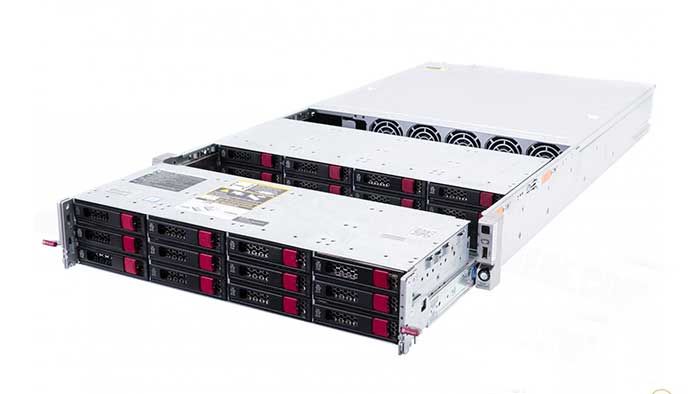HPE Apollo Server
HPE has been able to build a high-performance computing ecosystem (HPC) to help solve the most complex performance problems of companies and corporations networks. HPE Apollo servers are high density servers. These types of servers are designed for high efficiency and performance. These servers have computing, storage, network, power, and cooling racks. HPE Apollo servers, such as the G10 server, use a liquid cooling system that is up to 1000 times more efficient than an air cooling system. This cooling method makes the servers perform up to twice as well in group computations and when using cloud space.
Apollo systems provide a platform with high efficiency and productivity. These systems like G10 servers are rack-scaled and can be very suitable for use in High Performance Computing or HPC and the workloads of service providers and AI (artificial intelligence). These servers can be very useful especially in organizations. These systems, due to their excellent performance, are in the category of hyper scale systems that have excellent and expandable processing power for web hosting, big data processing, web services and supercomputing applications. Rack-Scale is a logical architecture that separates network resources, storage, and computing.
Apollo server types
The first servers to be launched by HPE under the Apollo series were HPE Apollo 2000 and HPE Apollo 4000 servers. HPE Apollo server 2000 is a type of server that has 2 units and is an ideal option for performing complex calculations. Of course, according to today’s needs, its size is a bit compared to large cloud computing servers, which there is no particular problem in this regard, and this server is highly efficient.
For this model of systems, there are two models of HPE Proliant server. Model HPE Proliant XL170r G9 and model HPE Proliant XL190r G9. The difference between the two servers is in the support for PCIe 3.0 slots. The XL170r supports two slots and the other server supports three external slots.
HPE Apollo 4200 Gen9 Server
The HPE Apollo 4200 Gen9 server is one of a series of servers that requires two units. This type of Gen9 server can also support 28 3.5-inch (LFF) or 54 2.5-inch (SFF) drives. The HPE Apollo 4200 Gen9 server is 32 inches deep, so you can provide this server with the ability to easily use the very high storage space in your existing architecture.
HPE Apollo 4200 Gen9 Server Specifications
- Chassis: U2 rack
- Storage: 28 LFFs or 54 SFFs
- Network: Two 1 GB Ethernet
- Memory: Maximum 1 terabyte
- Management: HPE iLO4 Advanced
- Development: 5 PCI-E 3, FlexibleLOM
- Server model: HPE Apollo 4200 Gen9
- Reed controller: HPE Array P840ar Embedded
- Processor: Two processors – Intel® Xeon® v4 E5-2600 v3
- Power supply: Two power supplies 800 and 1400 watts hot-plug

0






